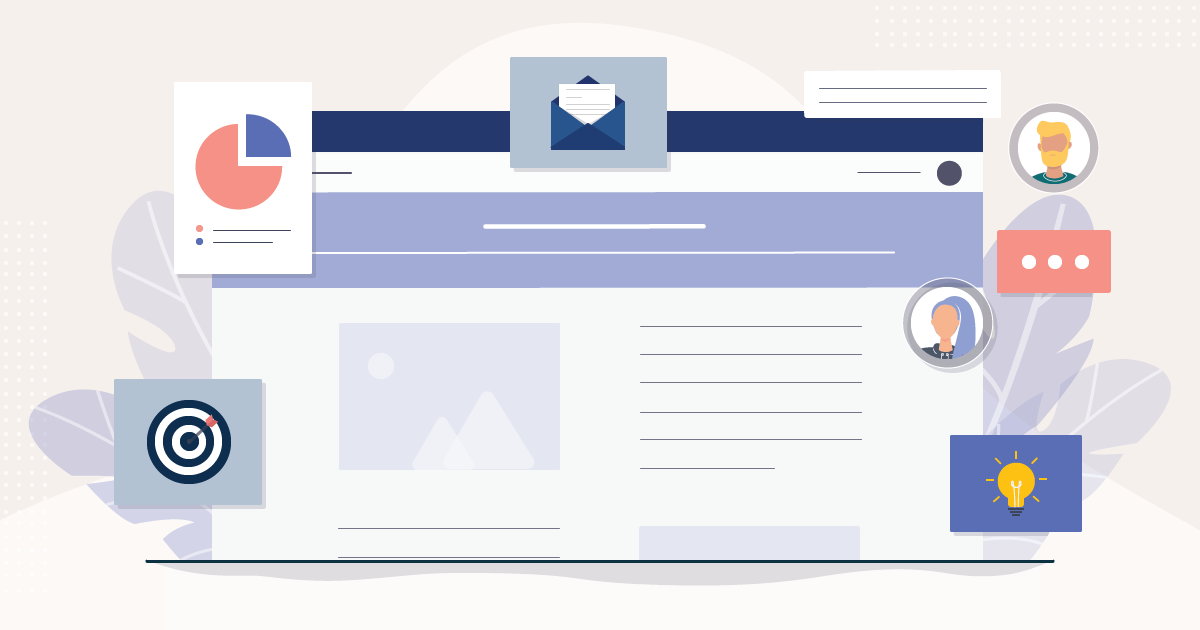
The Ultimate Guide To Inbound Marketing For Thriving Businesses [2025]
How can marketers attract the right audience and gradually convert them into loyal customers? By putting inbound marketing at the top of their lists – simple as that.
As you already know, there are lots of ways to bring new customers to your business. Leaders are on the hunt for the secret formula to business growth, but sometimes it can be tricky. Especially for B2B (Business-To-Business) organizations, where the buyer’s journey can be complex, it is challenging to secure success down the road.
What nobody could argue, though, is that building a striking inbound marketing strategy can increase your customer and fan base. Let’s see what it’s all about and how to benefit from this process in terms of ROI and brand awareness!
What Is Inbound Marketing?
Inbound marketing, which was initially introduced by Hubspot’s co-founder Brian Halligan, is a business strategy that aims to attract, convert, and retain customers through valuable information and content, such as blog posts, case studies, or infographics. You can boost brand visibility and awareness through this long-term tactic and bring the right audience through tailored experiences.
One of the success factors of inbound marketing is that it targets people who are already interested in your products/services, looking for ways to reduce their pain points. Once you serve them with the right solutions at the right marketing funnel stage, they will ultimately turn into your customers later on.
Top Inbound Marketing Benefits
So, how vital is inbound marketing for your business, and in what sense? Here are the significant blessings you’ll count:
It Helps you Reach your Target Audience
Compared to traditional marketing that aims at a broader outreach, inbound marketing targets the so-called buyer personas. Inbound marketers use various platforms to deliver great content and unlimited support. They channel their marketing efforts and resources towards that area to bring maximal results to the business.
Overall, empathizing with your audience is one of the most critical aspects of marketing. When addressing their real needs and concerns, you start a constructive dialogue with prospects and buyers, building the ground for stronger customer relationships.
It Generates More Leads and Conversions
One of the main goals of inbound marketing is lead generation. When you bring new visitors to your website and offer a great user experience, they are bound to engage more with your brand and product/services.
To move new leads down the marketing and sales funnel, you should provide them with the resources they need to succeed in return for their contact information. Once you obtain those details, you can start meaningful conversations with them and create additional opportunities to convert them using webinars, customer testimonials, or whitepapers.
It Boosts Brand Awareness
When using the right inbound marketing tools – which we’ll discuss excessively below – your brand assets will likely appear in places your potential buyers usually hang out, for example, their social media or mailboxes. So, users that interact with your content will eventually learn more about your brand and positioning in the market.
These days, consumers tend to prefer brands with a robust value system that aligns with theirs. Don’t forget to showcase your brand values to the world, as it will be game-changing for your business.
It Increases your ROI
But how do all these finally translate into Return-on-Investment? According to recent inbound marketing stats, pretty impressively, as it yields three times higher income than traditional marketing.
This is even more crucial for B2B organizations, as customers need more time and evidence to make a purchase. Without the constant nurturance that inbound marketing offers, it would be hard to close deals relying solely on old-fashioned sales tactics, such as cold calling.
Inbound Marketing Vs. Outbound: The Key Differences
Now let’s move to a brief head-to-head comparison of inbound versus outbound marketing. Will there be a winner out of this?
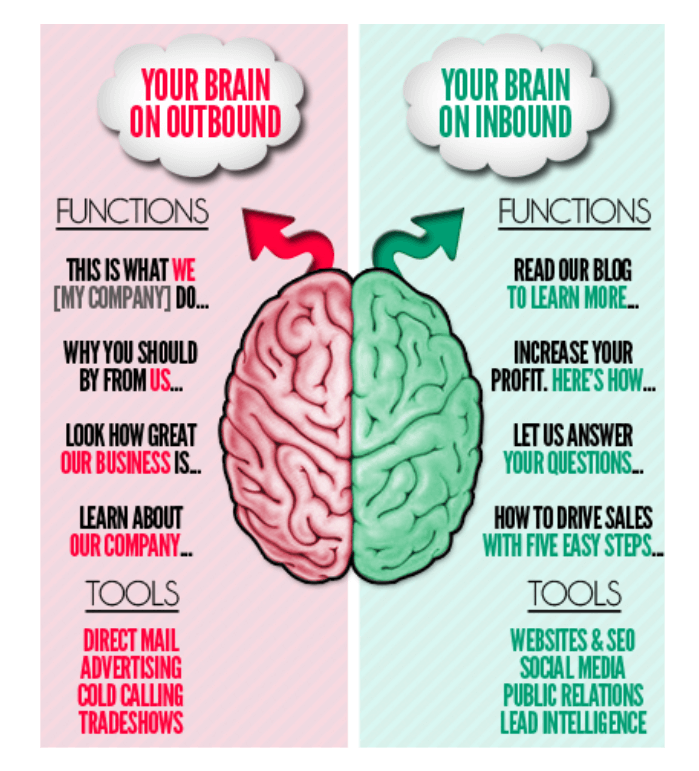
Goal
Inbound: The main goal is to attract your target audience by providing meaningful and personalized marketing experiences.
Outbound: The primary goal is to approach a broad audience to present them with your product/services.
Method
Inbound: Blog posts, infographics, e-books, videos, email newsletters, etc.
Outbound: Cold calls and emails, broadcast media, etc.
Messaging
Inbound: Costumer-driven; aims to provide value to consumers in need of certain services.
Outbound: Marketer-driven; intends to buy value from consumers despite their needs.
Based on the above info, someone can argue that outbound marketing is probably a blast from the past. Nowadays, most consumers have gained control of their purchase decisions and dislike being forced to buy products they hardly ever need.
However, this doesn’t mean that outbound is utterly irrelevant in the market. For example, if a business wants to maximize its growth in a short period, it can’t rely solely on inbound, as it needs more time to reap its fruit, and it’s complex to track. So in most cases, the synergy of both marketing tactics will ultimately profit your business.
Best Inbound Marketing Strategy Types
We’ve already mentioned some inbound marketing practices above. Let’s elaborate on them to get a good grasp of these digital marketing assets:
1. Content Marketing
Have you heard the phrase “Content is king?” Bill Gates knew what he was talking about when he made that statement, as content can significantly impact how customers perceive your brand.
Content marketing is a long-term strategy that focuses on creating and distributing resources for customers, with helpful insights that can covert them going forward. Here are the most typical content types:
- Blogging
- Testimonials
- Infographics
- Videos/Podcasts
- Case Studies/Whitepapers
Providing those resources to prospects and leads helps them understand the actual value of your products/services and how they can soothe their biggest pain points. Try to figure out what content types would attract them most on each part of the funnel to serve them the appropriate resource.
For example, suppose someone is still in the consideration stage. In that case, they will probably look for customer testimonials and case studies to understand how other customers have benefitted from your brand. Once you convince them that you’ll bring actual value to them, as well, they will be more likely to finalize their purchase.
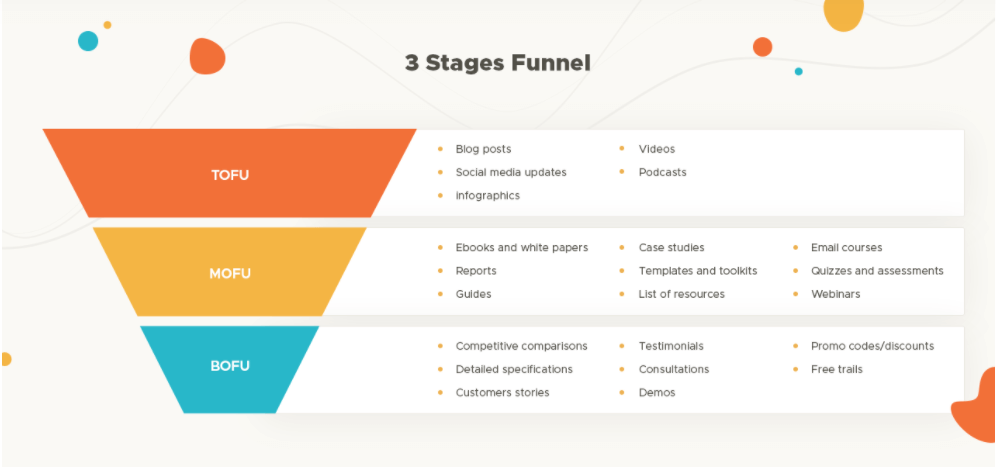
Moreover, even though content can boost all different types of businesses out there, for B2B, it’s a critical tactic to push the leads down the funnel. This is because customer journeys are more complex and time-consuming, and decision-makers ask for lots of information to make sure they invest in the right solution.
But how can you ensure that your content will be easily accessible to your target audience? Continue reading and see how the rest of the inbound marketing channels and techniques can make your great content shine bright.
2. Email Marketing
Through email marketing, you can reach your potential customers at critical times during the buyer’s journey. Once you get a subscriber’s opt-in, you can start effective communications with them through all types of emails and reap all the benefits down the line, like high ROI and conversion rates.
For example, you can inform your buyers about your latest updates and offers or send them discounts and other incentives in the form of newsletters. Feel free to share your blog posts and additional resources to describe how your products/services can work wonders for businesses.
Transactional emails are also valuable means of interaction with your customers. They are triggered automated emails sent to shoppers after a completed action as follow-ups, such as a purchase or registration. Here’s an example by Lyft:
Subject line: Lyft Ride Pass purchase confirmed
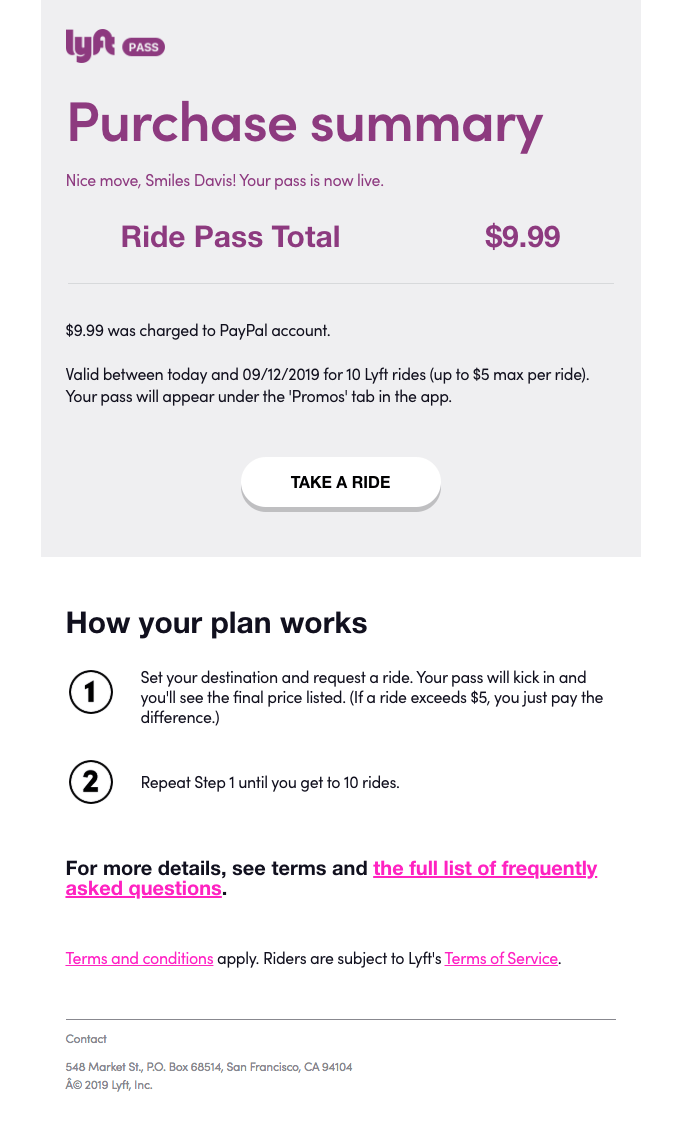
But what can make an email successful? To increase your open and conversion rates, here’s what to take into consideration:
- Create an email subject line that draws the subscriber’s attention.
- Write compelling email copy that emphasizes your main points.
- Craft a spotless design that matches your brand theme.
- Include a call-to-action (CTA) that leads to conversion.
There are specific practices such as email list segmentation and personalization that can also secure better results. Customers value more individualized experiences that address their needs directly. Start by personalizing email subject lines, and excellent results will soon arise.
To make all these come true, you need a top-notch marketing automation platform such as Moosend or Mailchimp to track all these processes in one place. For instance, through Moosend’s newsletter editor, you can create unique email marketing campaigns and follow their performance using innovative reporting features.
3. Search Engine Optimization
Did you know that 85% of consumers perform online research before completing a purchase? To make it easier for possible buyers to discover your website and content, search engine optimization (SEO) should become a priority for you. In short, SEO refers to the implementation of specific tactics aiming to move your website pages higher on search engines.
Google is leading the way in daily online searches, and YouTube is also high on the list. So how can you benefit from organic traffic and increase your revenue at a stable pace? Here are the leading SEO areas to focus on:
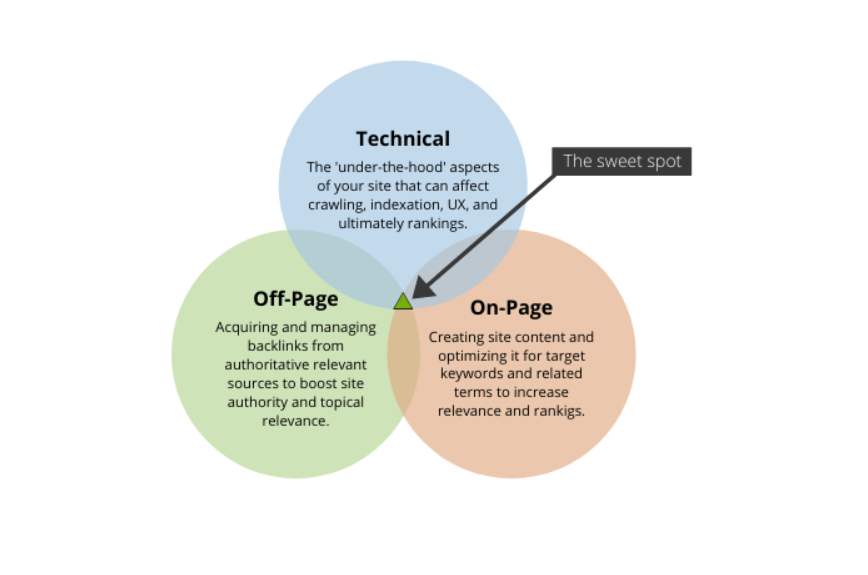
On-Page SEO: You can achieve this by including keywords relevant to your market and your target audience’s questions. Use an SEO tool like Ahrefs and Moz, search for high-volume keywords, and sprinkle them through your content. However, avoid overdoing it by stuffing your pages with lots of keywords, as this might hurt your performance instead.
Off-Page SEO: This practice aims to bring traffic to your website from external sources in the form of backlinks. When notable sources link to your website, crawlers “understand” that your content is of high quality and move it higher on the rankings. You can also try guest-blogging to maximize your reach.
Technical SEO: SEO performance also relies on your website’s backend structure and site index. Parameters such as low loading time or broken links can cost you rankings. That’s why you should regularly monitor them.
If you want to ensure a stable gain from organic traffic, it’s best to hire a specialist to take the lead on all the SEO project management tasks.. However, keep in mind that first results on search engines can also result from paid advertising. In some instances, to meet your conversion goals, it’s best to combine SEO with tactics such as PPC to save valuable time and traffic.
4. Social Media Marketing
Now let’s move to another asset of inbound methodology that can contribute to your business success – social media marketing. Social media platforms can become a great venue to showcase your products/services and start meaningful conversations with customers and prospects.
There is no one-size-fits-all when it comes to social media planning. You should treat each platform differently and set unique goals for each of them. For example, LinkedIn is mighty for B2B organizations, while Instagram and TikTok can be game-changing for B2C.
Here are the most significant benefits of social media marketing:
- Increased brand awareness
- Higher organic traffic
- More lead generation
- Better customer support
- Enhanced insights on competition
So post your latest updates and content and start watching how they perform. In addition, social media listening, the practice of tracking mentions, and conversations about your brand on social platforms will enable you to understand how effective your offers are and find ways to improve them. You can also utilize social media to respond to customer queries when needed and boost customer support.
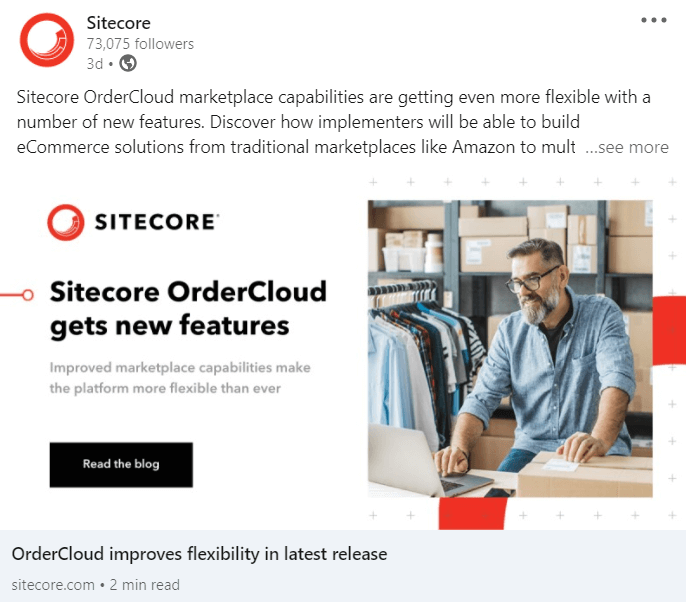
Additionally, you can run highly targeted campaigns on social media to attract the right audience for you. By combining paid advertising, such as Facebook Ads, with organic inbound methods, you can take your business growth to a new level.
Keep in mind that if you want to do social media marketing right, you should create a dedicated social media strategy. Set goals for each channel separately and focus on solid content creation to meet them. Then evaluate your performance and optimize accordingly.
5. Website Optimization
Last but not least, eCommerce business owners should spend extra effort to optimize their website and create a great user experience. This way, your visitors will navigate easily through your site and find the way to the “Shop” button at the flick of a switch.
To achieve this, you should build a clear layout where all categories are easy to find. Make sure to place essential pages, e.g., shopping cart, product categories, checkout page, at distinct places. The same goes for customer testimonials and reviews, as they play a considerable part in purchase decisions.
Through creative design and copy, try to lead visitors in the right direction based on the action they want to take. Keep a consistent brand voice and design to make navigation more straightforward for them, even across channels. Also, maintain those elements for other assets contributing to conversions, such as landing pages and sign-up forms.
Finally, if you want to gain more insights on optimizing your website, you can run regular customer surveys or track conversion in real-time using heatmaps.
How To Create A Successful Inbound Marketing Strategy
Now that you’ve learned all the perks of this marketing technique, let’s see how you can set it up for your business in simple steps:
1. Build your Buyer Persona
As mentioned in the intro, every business has its target audience. They are the type of buyers that will be keen on purchasing your products/services and becoming your biggest promoters. That’s why it’s critical to design your buyer personas carefully before starting your inbound marketing methodology.
Here are some personal details that will enable you to craft them effectively:
- Location
- Age group
- Education level
- Employment type
- Income level
This information will help you analyze their interests, intents, and pain points. Need more examples? Tune into our buyer personas guide for more.
2. Map the Customer Journey
So you’ve marked your top buyer personas and have addressed their real needs. Now, it’s time to understand how and when they interact with your brand to improve your inbound marketing method and keep them engaged until they reach the checkout. In short, it’s time to analyze the top customer journeys.
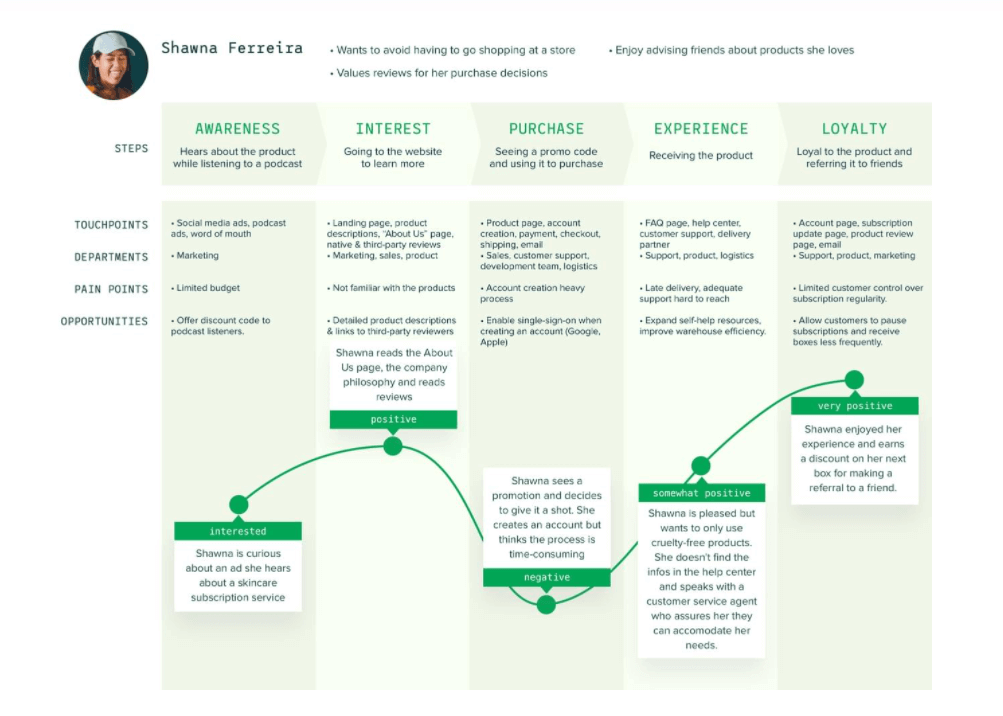
A customer journey map includes the customer’s touchpoints, goals, pain points, and emotions during each lifecycle stage. For example, a buyer will look for product reviews and pages to compare similar offers at the purchase stage.
Overall, these details will let you design an inbound experience hard to resist that will smoothly transfer the buyers from one stage to another. You can compile that info from a tool like Google Analytics or your CRM platform. Customer surveys and heatmaps will also enable you to collect valuable data.
Want to create a map asap? Here is a free customer journey mapping template by Moosend!
3. Create Valuable Content
Content marketing can undoubtedly move your business forward in many ways. Providing relevant content like blog posts and testimonials to your subscribers and customers will nurture them at different stages. And remember, optimizing your website and content for SEO can lead you to the top of the search engine results and bring new customers to you.
Plus, building your buyer persona profiles and customer journeys will help you figure out which type of content to deliver to them. Would they prefer a video testimonial or a blog review? Would they listen to a podcast, or is an infographic just enough? Once you compile that info, create quality content that will attract their attention and inform them the right way.
4. Utilize Email Marketing
Emails marketing is another excellent asset for inbound marketers. According to recent email marketing stats, 59% of respondents during a survey said that emails influence their purchase decisions, with half of them buying straight from that email.
So once you’ve spotted your qualified leads, start sending promotional emails to move them down the funnel. For instance, you can share your latest content or updates about your offers. Or you can set up abandoned cart and personalized emails to deliver a more individualized experience for them and a more significant profit for you.
Have a look at this fabulous newsletter by Wistia:
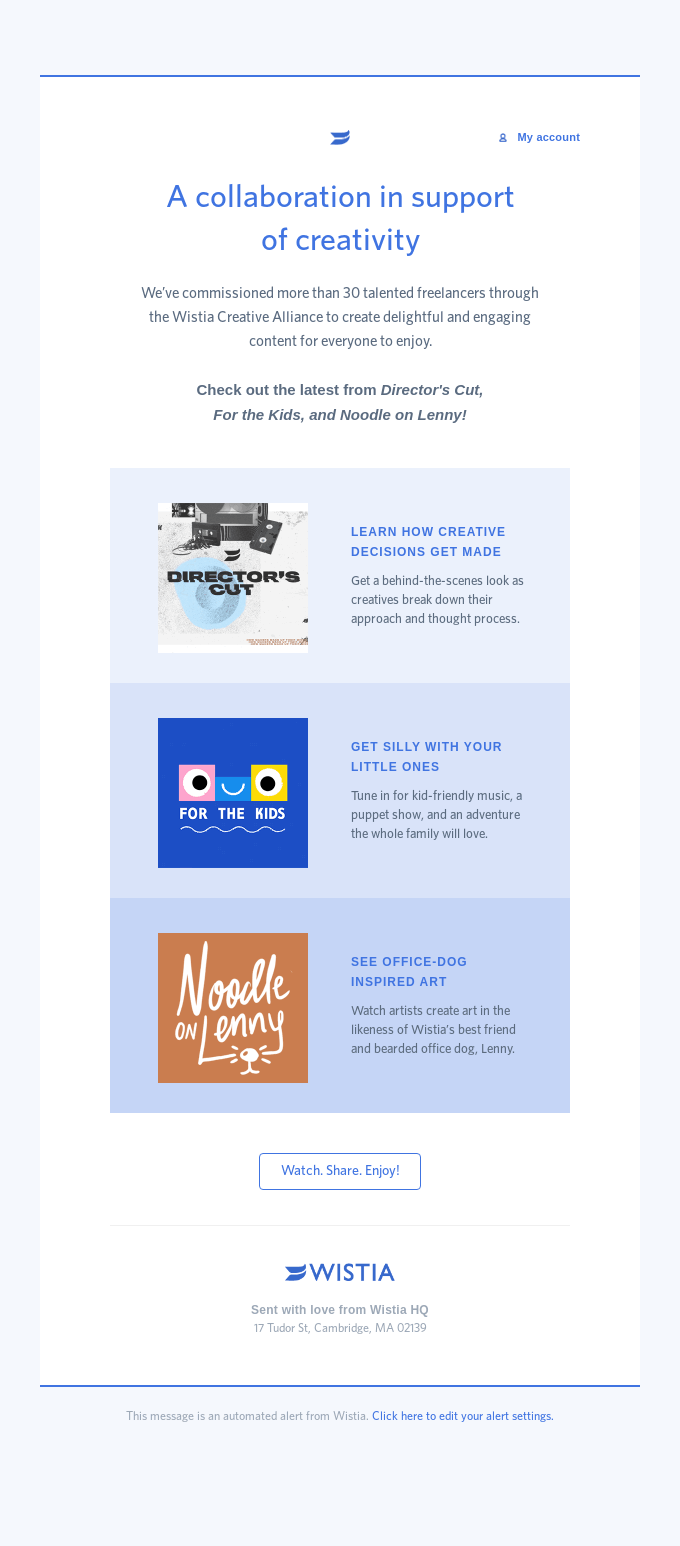
Last but not least, with an all-in-one marketing automation solution like Moosend, you can set up and schedule those emails easily. No need to spend on coding and design resources. It’s all there for you!
5. Build a Striking User Experience
In inbound marketing, the user is in charge of their navigation and interaction with your eCommerce site. However, it’s up to you to make this experience delightful and interesting for them. How? Again, customer journey mapping can highlight the critical website elements your users run into the most. Make sure to put them in the spotlight.
To build a clear design layout, place essential items such as customer stories or product/service descriptions at a profound place. You can also design pop-ups to gather subscriptions and boost your inbound marketing efforts even more. Finally, remember that your copy matters, too.
Need more inspo? Feel free to dive into this list of best eCommerce sites before you get started.
6. Measure your Inbound Marketing Performance
As you saw earlier, inbound marketing has lots of aspects to consider. But how easy is it to track its performance? The truth is that this process can become complicated; that’s why you should plan it diligently, taking all parameters into account.
Here are some key metrics that will help you out:
- Conversion Rate
- Website Traffic
- Leads
- New customers
To monitor those Key Performance Indicators (KPIs), you’ll need specific tools to collect the appropriate data. We’ve already mentioned that Google Analytics and CRM tools such as Salesforce can be extra helpful when tracking your performance. Just make sure to set clear objectives beforehand and adjust them based on your business goals if needed.
7. Create Lead Magnets
Wondering how to increase your subscriber base and start engaging more with prospects? You can achieve that via lead magnets. These are free marketing items available in exchange for a prospect’s details, such as email addresses and names.
So if you want to obtain new leads, you can create free valuable content such as an infographic or report. You can also offer a webinar to attract customers in the later stages of the funnel, looking for extra proof to make a better decision.
8. Ensure Mobile-Friendliness
On a final note, it’s important to remind you that many consumers use their mobile devices to visit and navigate eCommerce sites. Some of them will make purchase decisions during those visits.
That’s why you should ensure a great mobile experience for your customers and prospects on the spot. Otherwise, you might lose them down the road due to a confusing experience.
The Takeaways
In a nutshell, inbound marketing is precious for businesses that want to position themselves in their market. Make the customer the owner of their purchasing route, and they will appreciate your brand once and for all. Also, remember that consumer behavior has shifted online nowadays, and buyers opt for brands with high values and visionary goals.
Even though the efficiency of inbound marketing is undoubtedly high, the scope of this reading is not to underestimate the power of outbound marketing. In most cases, combing those two is vital, especially in B2B operations. So once you’ve spotted your qualified leads, contact your sales team and prompt them to reach out to your prospects.
And if you’re looking for a smart email marketing solution to boost your inbound efforts, we got the best tool for you. Sign up for a Moosend account today and gain the profit your business deserves!
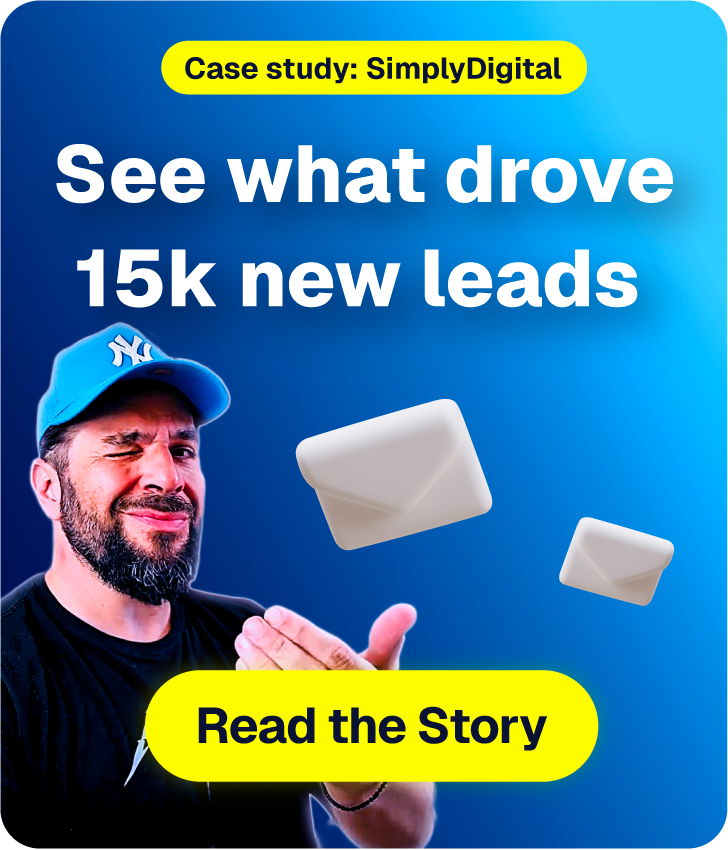

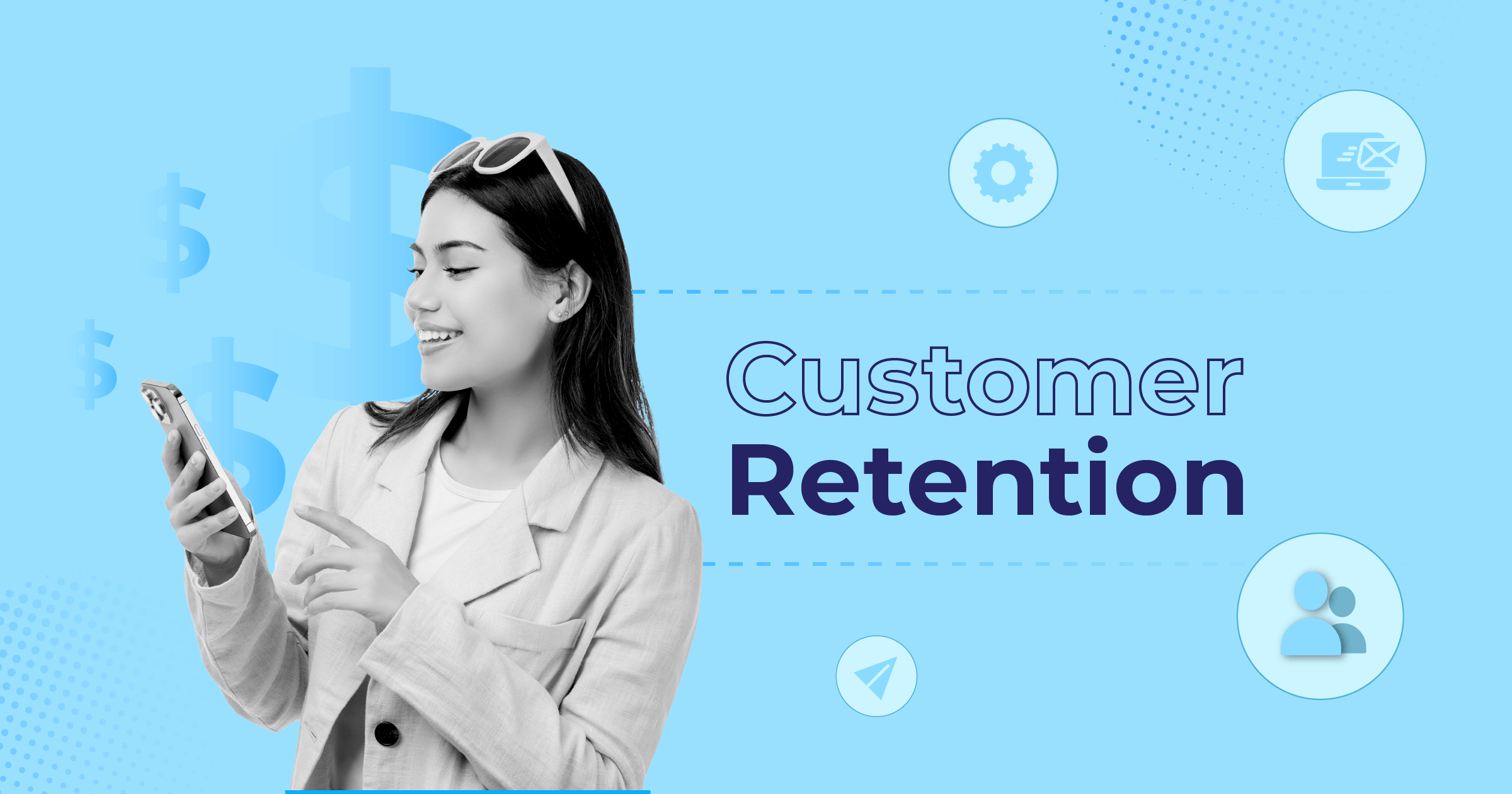
 Published by
Published by
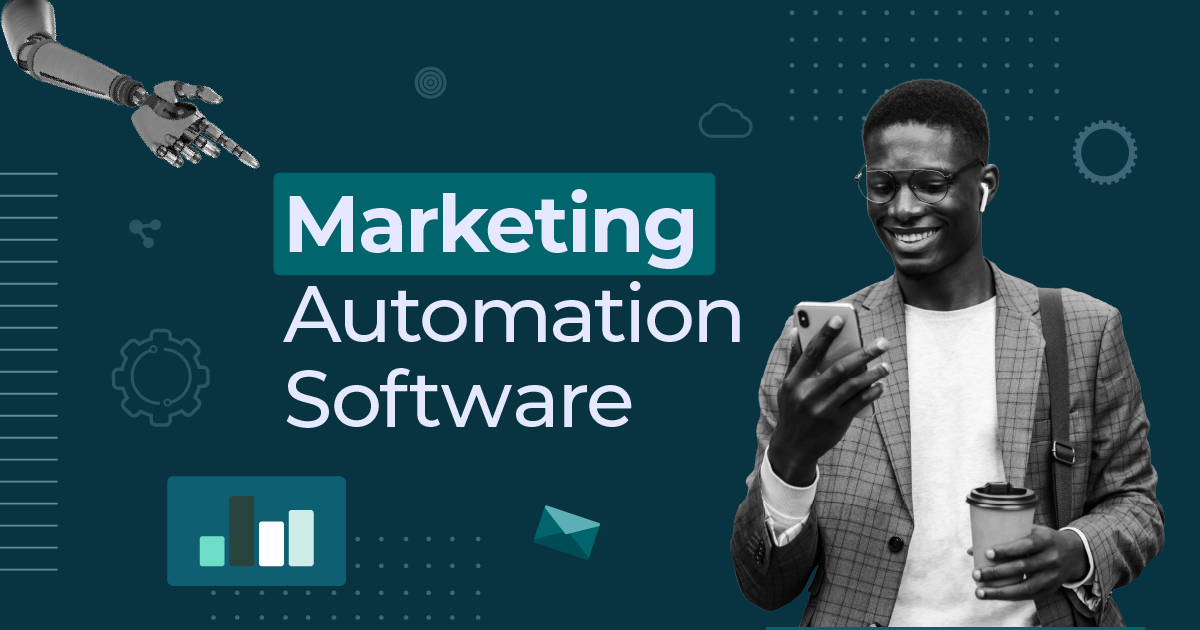
 Published by
Published by
